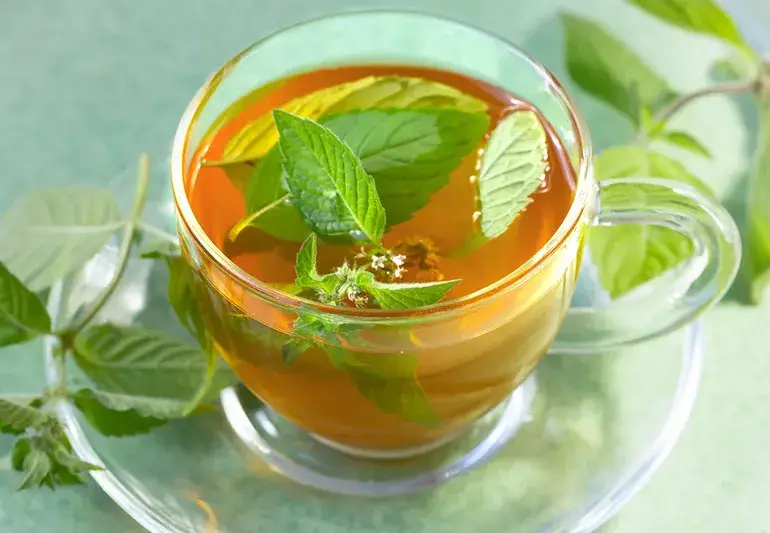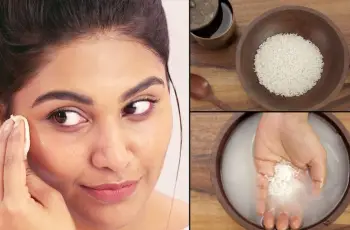
Green Tea in Skincare: A Powerful Natural Ingredient for Healthy, Radiant Skin
Green tea has long been celebrated for its many health benefits when consumed as a beverage, but what many people don’t realize is how powerful it can be when used topically. In skincare, green tea—scientifically referred to as Camellia Sinensis Leaf Extract—has become a prized ingredient for a wide range of skin types and concerns, thanks to its remarkable combination of antioxidant, anti-inflammatory, anti-aging, and even anticarcinogenic properties.
From protecting against sun damage and reducing redness to helping fight acne and the signs of aging, green tea is a multipurpose hero ingredient. It’s recommended for use in nearly all skin types—including sensitive, acne-prone, oily, and even rosacea-affected skin. Whether you’re a skincare minimalist or someone with a 10-step regimen, incorporating green tea into your routine can offer profound benefits.
What Is Green Tea Extract and Why Is It Used in Skincare?
Green tea is derived from the leaves of the evergreen Camellia sinensis plant, a species native to East Asia. It belongs to the Theaceae botanical family and is processed minimally compared to black tea, preserving its rich concentration of natural polyphenols and antioxidants.
In skincare products, green tea is typically listed on the label as Camellia Sinensis Leaf Extract. It is water-soluble, generally considered safe, and compatible with a wide range of cosmetic formulations.
Its popularity in skincare is well-earned. Not only does it offer a suite of scientifically supported benefits, but it also qualifies as a “clean” ingredient—natural, non-toxic, and even potentially organic when cultivated without pesticides.
Key Benefits of Green Tea in Skincare
Green tea is not a one-trick pony. In fact, it offers a wide range of benefits that make it ideal for addressing multiple skin concerns. Here’s a closer look at the most important ones:
1. Antioxidant Protection Against Free Radicals
Green tea is rich in polyphenolic catechins, which are potent antioxidants. The most well-known of these is EGCG (epigallocatechin-3-gallate), which helps neutralize harmful free radicals that damage skin cells and accelerate aging.
By scavenging these unstable molecules, green tea protects the skin from environmental stressors like pollution, cigarette smoke, and UV radiation.
2. Photoprotection and UV Damage Repair
Studies conducted since the 1990s have shown that green tea can help protect the skin from damage caused by ultraviolet (UV) radiation—a major cause of premature aging and skin cancer. Green tea polyphenols (GTPs) have been shown to:
Inhibit DNA damage caused by UVB rays
Reduce inflammation and redness after sun exposure
Increase the expression of enzymes that help repair damaged DNA
Limit UV-induced immunosuppression by modulating interleukin levels (e.g., increasing IL-12 and reducing IL-10)
This makes green tea a powerful ingredient not only in daily moisturizers and serums but also in post-sun and after-sun skincare products.
3. Anti-Aging Effects
As we age, our skin becomes more vulnerable to oxidative stress and collagen breakdown. Green tea helps combat both.
Research has shown that EGCG inhibits matrix metalloproteinases (MMPs)—enzymes that degrade collagen and elastin in the skin. By limiting MMP activity, green tea may preserve the structural integrity of the skin, promoting a more youthful appearance.
Furthermore, green tea reduces the activity of inflammatory transcription factors such as NF-κB and AP-1, which are involved in skin aging and wrinkle formation.
4. Anti-Acne Properties
Thanks to its antibacterial, astringent, and anti-inflammatory properties, green tea is also a valuable tool in the fight against acne. It reduces sebum production and can help calm inflamed pimples.
Green tea may also help reduce the colonization of Propionibacterium acnes, the bacteria involved in the development of acne.
5. Treatment for Rosacea and Eczema
Because of its strong anti-inflammatory activity, green tea is often recommended for sensitive skin conditions like rosacea, eczema, and psoriasis. It helps soothe irritation, calm redness, and reduce flare-ups triggered by environmental aggressors.
Green tea’s ability to strengthen the skin barrier also plays a role in managing these chronic inflammatory conditions.
6. Skin Brightening and Hyperpigmentation Reduction
Green tea can help reduce hyperpigmentation by inhibiting the enzyme tyrosinase, which plays a key role in melanin production. This makes it effective in evening out skin tone and diminishing the appearance of dark spots, post-acne marks, and melasma.
How Green Tea Works on a Chemical Level
Green tea’s power lies in its unique composition of catechins, a class of polyphenolic flavonoids. The four major catechins in green tea are:
EGCG (Epigallocatechin-3-gallate)
ECG (Epicatechin-3-gallate)
EGC (Epigallocatechin)
GCG (Gallocatechin-3-gallate)
EGCG is by far the most biologically active and beneficial compound, accounting for the majority of green tea’s therapeutic effects. It influences several cellular pathways, including the MAPK (Mitogen-Activated Protein Kinase) signaling cascade, which regulates cell growth, inflammation, and immune response.
Formulating Skincare Products With Green Tea
✔️ Choosing the Right Form
While the whole leaf extract is commonly used, formulations with purified EGCG offer higher antioxidant potential. However, EGCG is more expensive and less stable than other green tea components, making it a challenge to formulate.
✔️ Stability Considerations
Green tea extract can oxidize over time, especially in light- or heat-exposed products, leading to a brown coloration. Interestingly, this browning is actually a good sign—indicating a high concentration of polyphenols rather than product spoilage.
Formulators often use opaque packaging and stabilize EGCG with other antioxidants like vitamin C or ferulic acid to extend shelf life.
✔️ Skin Penetration
EGCG is hydrophilic, which means it doesn’t easily penetrate the skin barrier on its own. To enhance absorption, it’s often combined with penetration enhancers such as:
Hyaluronic acid
Oleic acid (from oils)
Liposomes or nanoemulsions
For best results, green tea products should be applied to slightly damp skin or layered underneath an occlusive moisturizer to lock in hydration and increase penetration.
Is Green Tea Safe in Skincare?
Yes—green tea is considered a safe, natural, and non-toxic ingredient. It is classified as “Generally Recognized as Safe (GRAS)” by the FDA and receives a 1–2 rating from the Environmental Working Group (EWG), indicating low toxicity.
That said, rare allergic reactions have been reported. Individuals who are allergic to black tea may also react to green tea extract, although such cases are extremely uncommon.
Environmental Sustainability of Green Tea
Green tea cultivation has a relatively low environmental impact compared to other crops. Tea plantations are typically sustainable, especially when organic farming methods are used. However, the effects of climate change—rising temperatures and changing rainfall patterns—pose future challenges to tea agriculture.
Consumers looking for sustainable skincare should consider organic-certified green tea products, which avoid pesticides and support environmentally responsible farming.
Who Should Use Green Tea in Skincare?
The answer? Everyone. According to the Baumann Skin Typing System, green tea is suitable for all 16 skin types. It benefits:
Oily and acne-prone skin (by reducing sebum and inflammation)
Dry and sensitive skin (by soothing and hydrating)
Aging skin (by protecting collagen and reducing wrinkles)
Uneven or hyperpigmented skin (by lightening dark spots)
How to Add Green Tea to Your Skincare Routine
If you want to experience the benefits of green tea, here’s how to incorporate it effectively:
Use a green tea serum or essence after cleansing and toning.
Layer it with other hydrating ingredients like hyaluronic acid.
Seal with a moisturizer to enhance absorption.
Use daily sunscreen, especially if you’re treating pigmentation.
Look for products that list Camellia Sinensis Leaf Extract or EGCG high on the ingredient list, ideally in opaque or airless packaging to preserve potency.
Final Thoughts
Green tea is more than just a calming drink—it’s a botanical powerhouse that offers real, visible improvements in skin health. Whether you’re battling acne, signs of aging, inflammation, or sun damage, this multi-functional ingredient deserves a place in your skincare routine.
With solid scientific backing and widespread compatibility with other actives, green tea is an ideal ingredient for almost anyone looking to soothe, protect, and rejuvenate their skin naturally.
Ready to upgrade your skincare? Look for clean, high-quality products featuring green tea or talk to a skincare specialist about how to build a routine tailored to your unique needs.


